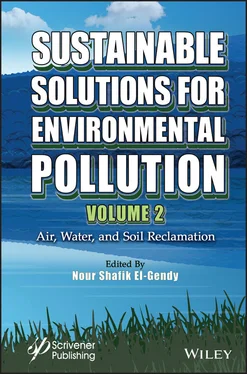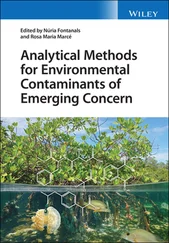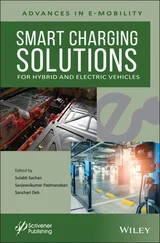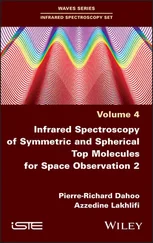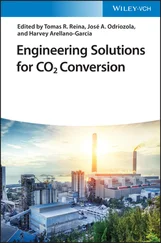Sustainable Solutions for Environmental Pollution, Volume 2
Здесь есть возможность читать онлайн «Sustainable Solutions for Environmental Pollution, Volume 2» — ознакомительный отрывок электронной книги совершенно бесплатно, а после прочтения отрывка купить полную версию. В некоторых случаях можно слушать аудио, скачать через торрент в формате fb2 и присутствует краткое содержание. Жанр: unrecognised, на английском языке. Описание произведения, (предисловие) а так же отзывы посетителей доступны на портале библиотеки ЛибКат.
- Название:Sustainable Solutions for Environmental Pollution, Volume 2
- Автор:
- Жанр:
- Год:неизвестен
- ISBN:нет данных
- Рейтинг книги:3 / 5. Голосов: 1
-
Избранное:Добавить в избранное
- Отзывы:
-
Ваша оценка:
- 60
- 1
- 2
- 3
- 4
- 5
Sustainable Solutions for Environmental Pollution, Volume 2: краткое содержание, описание и аннотация
Предлагаем к чтению аннотацию, описание, краткое содержание или предисловие (зависит от того, что написал сам автор книги «Sustainable Solutions for Environmental Pollution, Volume 2»). Если вы не нашли необходимую информацию о книге — напишите в комментариях, мы постараемся отыскать её.
This second volume in a broad, comprehensive two-volume set, “Sustainable Solutions for Environmental Pollution”, concentrates on air, water, and soil reclamation, some of the biggest challenges facing environmental engineers and scientists today.
AUDIENCE: Sustainable Solutions for Environmental Pollution,
Sustainable Solutions for Environmental Pollution, Volume 2 — читать онлайн ознакомительный отрывок
Ниже представлен текст книги, разбитый по страницам. Система сохранения места последней прочитанной страницы, позволяет с удобством читать онлайн бесплатно книгу «Sustainable Solutions for Environmental Pollution, Volume 2», без необходимости каждый раз заново искать на чём Вы остановились. Поставьте закладку, и сможете в любой момент перейти на страницу, на которой закончили чтение.
Интервал:
Закладка:

Figure 1.14 (a) illustration of balance and imbalance nutrient and biodegradation flux; (b) Illustration of the use of flow control variables.
Ecohydrology approach allows, for example, the design of CWs because the knowledge of the dynamics of the processes is defined (Lee et al. , 2009). Without wanting to turn water bodies into treatment plants, it is necessary to help them eliminate the pollutants that contaminate them. Bioremediation techniques propose to stimulate natural processes in order to help water bodies to actually or only apparently remove pollutants (they are always present, but hidden).
However, a third characteristic is to be considered in the spatial management of water flows and associated energies: it is the water path in the different compartments of a watershed. It is useful to have at this stage some pieces of information on the transfer velocities of water and associated substances, both dissolved and particulate, in a watershed. This will depend on the watershed topography, the key determinant of surface runoff and flows, its soil nature which influences the infiltration rate of water into the soil, the land uses which will modify the chemical composition of the water, and the geology which will influence the link between long travel time groundwater and short travel time runoff. It is also necessary to mention the presence of natural bio-catalysts such as bacteria present in the soil, the interfaces of transitions (ecotones) between terrestrial and aquatic environments such as ripisylves and the hyporheic zone (Krause et al. , 2017). These multiple interactions give rise to “hot spots” of metabolism at the interface of terrestrial and aquatic environments, in certain places and at certain “hot moments” (McClain et al. , 2003).
Wetlands and temporary streams are a good illustration of the latter. A good knowledge of water paths is therefore necessary to identify places with a high potential for natural metabolism in the catchment area. Water paths on magmatic or metamorphic formation will generally present essentially surface flows with a low quantity of underground water. Land use management along the waterways will then have a preponderant effect on the quality and quantity of water related to rainfall.
Because the control factors involved in these runoff stages are of different natures and spatial resolution, their respective roles are assessed on a qualitative scale (Lagadec et al. , 2016). A scoring method is then used to calculate at which locations in the catchment area the factors contribute most to creating situations with high metabolic potential. The resulting maps are only valid if they are validated by ground truths according to a described methodology (Braud et al. , 2020). Intense runoff mappings correspond to heavy rainfall events that are responsible for significant movement of particulate and dissolved matter with runoff and hypodermic flows. We can speak of “hot moment at hot spot”. In comparison, underground flows are slow and contribute above all to the dissolution of matter over time. These dissolved elements are remobilized by exchanges between surface runoff and hypodermic flows where oxidation and reduction reactions are driven by microbiological activity, variations in water content and soil temperature. The identification of metabolism hot spots indicates where in the catchment area the implementation of water and energy flow management strategies would be most effective.

Figure 1.15 A pluvial runoff model can help identify which part of the basin is more prone to accumulate water; potential humid zone can be identified.
This strategy can be illustrated (see Figure 1.15) at a catchment scale using the Indicators of Pluvial Intense runoff (IPIR) method (Dehotin et al. , 2015).
Runoff is represented by three stages occurring in sequence and be repeated along the slopes before reaching concave topographic breaks, creating local wetlands or contributing to streams flows.
1 1) The genesis stage, which expresses the potential of an area of the watershed to produce runoff. It can ranked from zero to very high potential;
2 2) The transfer stage, which indicates flow paths with erosive potential;
3 3) The accumulation stage, which indicates areas where water and solid deposits concentrate, accumulate and settle on slopes and watercourses.
The example treated is located in the peri-urban area of Lyon. Comparison with land uses allows the construction of hypotheses on water quality and possible sources of pollution. The direct transfer of agricultural runoff to accumulation zones allows us to imagine the places suitable for the restoration or construction of wetlands. It also makes it possible to imagine the modification of land use to reduce the input of nutrients and toxins if the environment is too small to treat this flux. It is then necessary to test the land use modifications as potential levers in pollution control or to insert CWs in areas with potential for accumulation along the transfer axes.
1.17 Conclusion
Due to population growth and increasing urbanization, water managers are faced with several major health and environmental challenges to which the implementation of NBSs can provide economic solutions without increasing the pressure and artificialization of aquatic environments. NBSs offer efficient and sustainable low-tech water management and sanitation opportunities, easily implemented at relatively low costs and with minimal maintenance.
Any bioremediation system needs continuous monitoring and maintenance. Indeed, performance monitoring and maintenance of the bioremediation system are also key conditions for the proper operation and thus the achievement of the expected performance. They must therefore be considered from the design stage and conducted according to a schedule adapted to the seasonal operating cycle of the bioremediation system. Where NBS bioremediation techniques are based on nature, this does not mean that one can abandon maintenance on the pretext that nature does not need maintenance. As we have seen, these systems evolve naturally over time, and minimal maintenance is necessary to maintain their maximum purification capacities.
Export of biomass should be planned in advance: plants will often fix metals which can cause a safety issue when further processed by composting or anaerobic digestion.
GHG emissions are a course of great concern in terms of climate change, but this concern is typical to any type of wetlands. Careful explanation to the public that a good balance of biodiversity will maintain low mosquitoes populations will be helpful, in order to convince the general public of the global usefulness of NBSs.
The overall effectiveness of NBSs is highly dependent on the context and options chosen at the facility design stage. The projects must be tailor-made, integrating the local geochemical specificities, the load and type of pollution to be treated and the objectives to be achieved.
A major issue for bioremediation implementation is the time it takes to get started. Indeed, biological processes are slow compared to excavation and hauling the polluted sediments to a landfill for hazardous waste or to an incinerator. The start-up of bioremediation systems based on nature requires between four and five years (the time when plant colonization is completed and the ecosystem has reached a sort of functional peak), validated by monitoring the activity of the expected processes. It will then be a matter of maintaining at a sufficient stage of regeneration to ensure maximum purification efficiency. There is a need to continue to develop global models which can help to design the best available NBSs, to evaluate their performance and to maintain them.
Читать дальшеИнтервал:
Закладка:
Похожие книги на «Sustainable Solutions for Environmental Pollution, Volume 2»
Представляем Вашему вниманию похожие книги на «Sustainable Solutions for Environmental Pollution, Volume 2» списком для выбора. Мы отобрали схожую по названию и смыслу литературу в надежде предоставить читателям больше вариантов отыскать новые, интересные, ещё непрочитанные произведения.
Обсуждение, отзывы о книге «Sustainable Solutions for Environmental Pollution, Volume 2» и просто собственные мнения читателей. Оставьте ваши комментарии, напишите, что Вы думаете о произведении, его смысле или главных героях. Укажите что конкретно понравилось, а что нет, и почему Вы так считаете.
